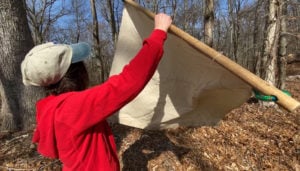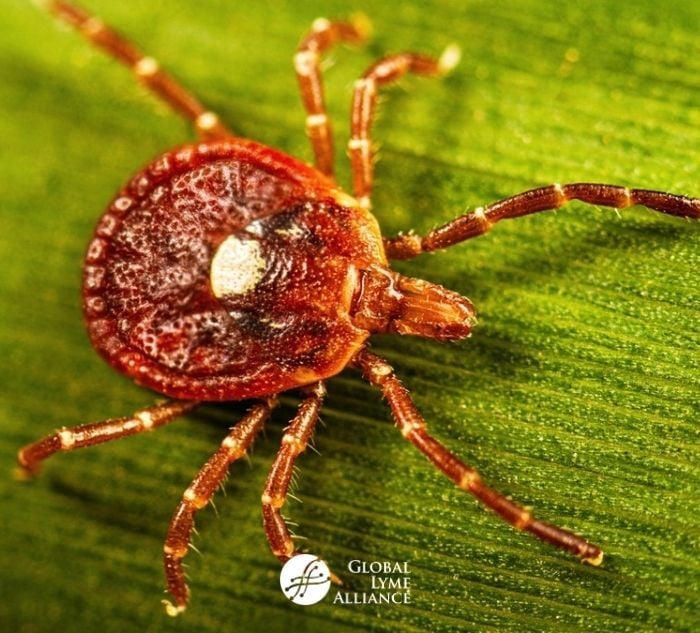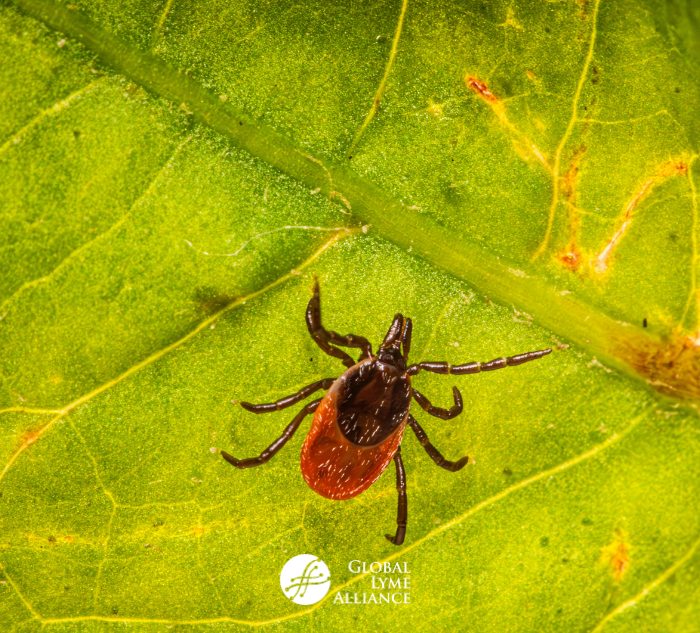
By Siobhan McGirl •
Jamie Cantoni is walking through a dirt path. She is on a mission. Her entire body is covered in tick-repellent clothing. A white cloth drags behind her. Every several feet, she inspects the cloth closely. "That is a female deer tick," she says as she holds up the cloth. Cantoni is a research assistant at the Connecticut Agricultural Experiment Station (CAES). The white cloth she is holding attracts ticks. Last year Cantoni and her colleagues brought the cloth to 40 different locations across the state and collected more than 2,500 ticks to be studied. [caption id="attachment_11297" align="alignleft" width="300"] Jamie Cantoni inspecting a cloth for ticks. Credit: NBC Connecticut[/caption] The CAES received a one year grant from the
Centers for Disease Control and Prevention last year to conduct a statewide surveillance program for ticks and tick borne diseases. "I think the CDC's concern is that they are seeing an increase in the number of the reported tick-borne disease cases," said Scott Williams, a scientist at the CAES. Williams called the data set that the surveillance effort provided "invaluable." According to its website, the CDC estimates about 300,000 people get
Lyme disease each year. A large portion of the cases are found in New England. The surveillance effort, which spanned spring summer and fall of 2019, allowed the team to get a better idea of what ticks are in the state, where they are and what percentage are infected. According to the team at the CAES, the deer tick remains the most popular in Connecticut. Of the 2,500 ticks that were collected, 2,068 were deer ticks. Dog ticks made up 437 of the collection. They also identified two new emerging species in Connecticut. They found three lone star ticks in the sample size and, for the first time, recorded an Asian long-horned tick in New London County.
Jamie Cantoni inspecting a cloth for ticks. Credit: NBC Connecticut[/caption] The CAES received a one year grant from the
Centers for Disease Control and Prevention last year to conduct a statewide surveillance program for ticks and tick borne diseases. "I think the CDC's concern is that they are seeing an increase in the number of the reported tick-borne disease cases," said Scott Williams, a scientist at the CAES. Williams called the data set that the surveillance effort provided "invaluable." According to its website, the CDC estimates about 300,000 people get
Lyme disease each year. A large portion of the cases are found in New England. The surveillance effort, which spanned spring summer and fall of 2019, allowed the team to get a better idea of what ticks are in the state, where they are and what percentage are infected. According to the team at the CAES, the deer tick remains the most popular in Connecticut. Of the 2,500 ticks that were collected, 2,068 were deer ticks. Dog ticks made up 437 of the collection. They also identified two new emerging species in Connecticut. They found three lone star ticks in the sample size and, for the first time, recorded an Asian long-horned tick in New London County.
| DEER TICK | 2,068 |
| DOG TICK | 437 |
| LONE STAR TICK | 3 |
| ASIAN LONGHORNED TICK | 2 |
CLICK HERE for Be Tick AWARE™ tick bite prevention tips.







-2.jpg)